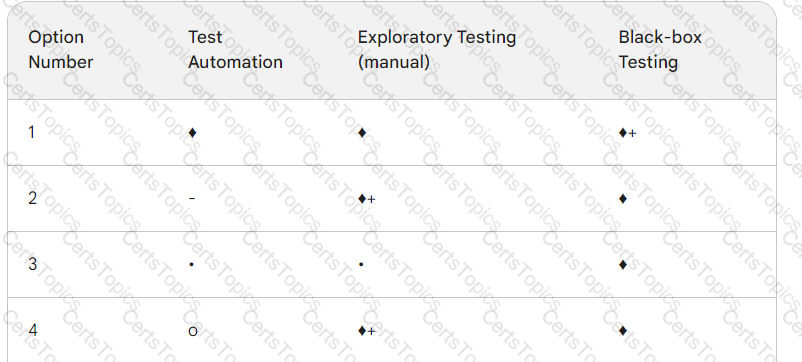ISTQB Related Exams
CTAL-TTA Exam







You are defining the test approach for an Agile project developing a system to control traffic lights at busy road junctions. The system will use sensors to measure traffic density and flow rates, optimizing traffic flow. While safety-critical, a risk assessment has deemed the project's risk level as low due to the team's expertise.
Which option below represents the BEST test approach for this project?
Key to symbols:
♦+ (highly recommended)
♦ (recommended)
o (neutral/optional)
• (not recommended)
- (not to be used)

SELECT ONE OPTION
You are asked to provide a practical and pragmatic testing solution for a commercial system where the main user interface is via the Internet. It is critical that the company’s existing good name and market profile are not damaged in any way. Time to market is not a critical issue when appropriate testing solutions are identified to mitigate business risks.
A product risk assessment has revealed the following product risk:
• Abnormal application termination due to connection failure of the main interface.
Which of the following is the appropriate test type to address this risk?
Given the following pseudocode:
Program tax check
Integer: tax_rate
real: tax%
BEGIN
tax% := 0
GET (tax_rate)
WHILE tax_rate > 0 loop
IF tax_rate > 3 THEN
tax_rate := 3
ENDIF
tax% := tax% + (tax_rate / 10)
tax_rate := tax_rate - 1
ENDLOOP
IF tax% > 0.6 THEN
print ("tax rate is high")
ELSEIF tax% < 0.1 THEN
print ("tax rate is zero")
ELSE
print ("tax rate is low")
ENDIF
END tax check
If control flow analysis is performed on the pseudocode, which of the following results is MOST likely?